If it weren’t for our Moon, we would probably feel lonely. Planet Earth is blessed with having one natural satellite. Other planets, such as Mars, are blessed with two; however, they are very little.
But what about the gas giants? How many moons does Jupiter have? Since 2020, Jupiter has 79 confirmed moons orbiting it. The four most famous moons, the Galilean Moons, are among the biggest moons in the Solar System.
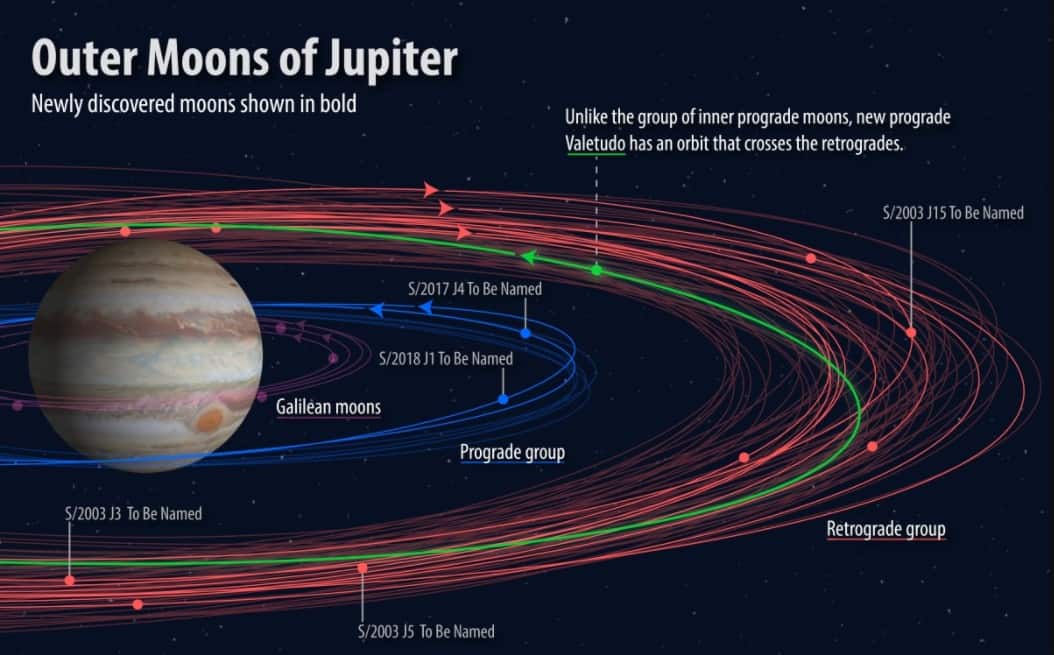
However, Jupiter isn’t the King of the Moons; it doesn’t have the most natural satellites. This title belongs to Saturn, who currently hosts 82 natural satellites. Jupiter might have more hidden moons orbiting around it, and if that is the case, they will surely be discovered when other probes will arrive within its borders.
Many missions are planned for Jupiter in the following years, and many of them target the four biggest moons of Jupiter, the Galilean Moons. So, let’s talk a bit about Jupiter’s moons. Let us see why they are sometimes even more eye-catching than Jupiter himself, and why scientists consider them valuable enough to send new spacecraft to analyze them.
The Galilean Moons
Io
Io is the innermost and third-largest of the four Galilean moons. It is also the fourth-largest moon in the Solar System, yet it has the highest density and the least amount of water molecules of any known celestial object in the Solar System.
This giant moon is the most geologically active object in the Solar System, with over 400 active volcanoes on its surface. This geological activity is due to the tidal heating caused by friction. The friction is caused by the pull between Jupiter and the other larger moons.
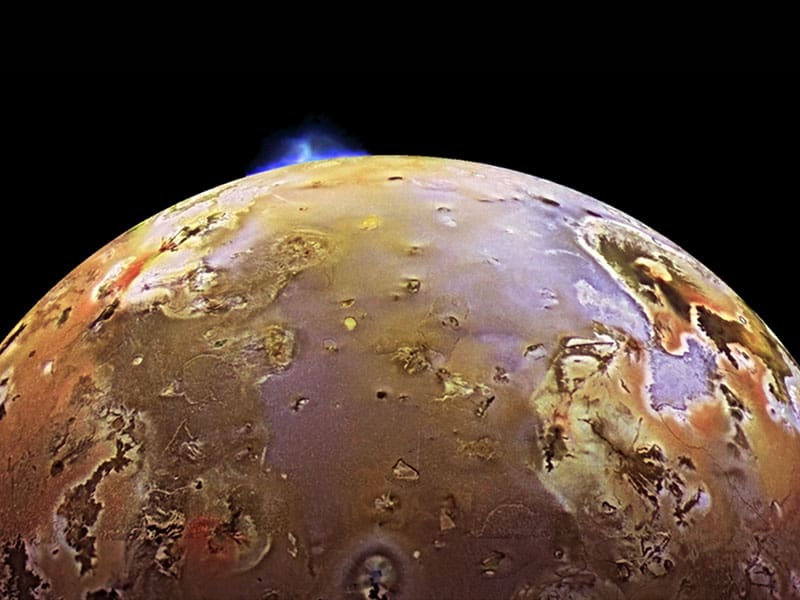
Io is tidally locked to Jupiter, and it orbits its parent planet in 1.77 Earth-days. Io is larger than our Moon, having a mean radius of 1,131 mi / 1,821 km.
Io’s volcanoes produce plumes that reach 500 km / 300 mi above the surface. This moon is mainly made of silicate rock surrounding a molten iron core.
Ganymede
Ganymede is the largest moon of Jupiter, and overall the largest moon in the Solar System. This moon is even bigger than the planet Mercury. Ganymede has a diameter of 5,268 km / 3,273 mi and a radius of 2,634 km / 1,636 mi.
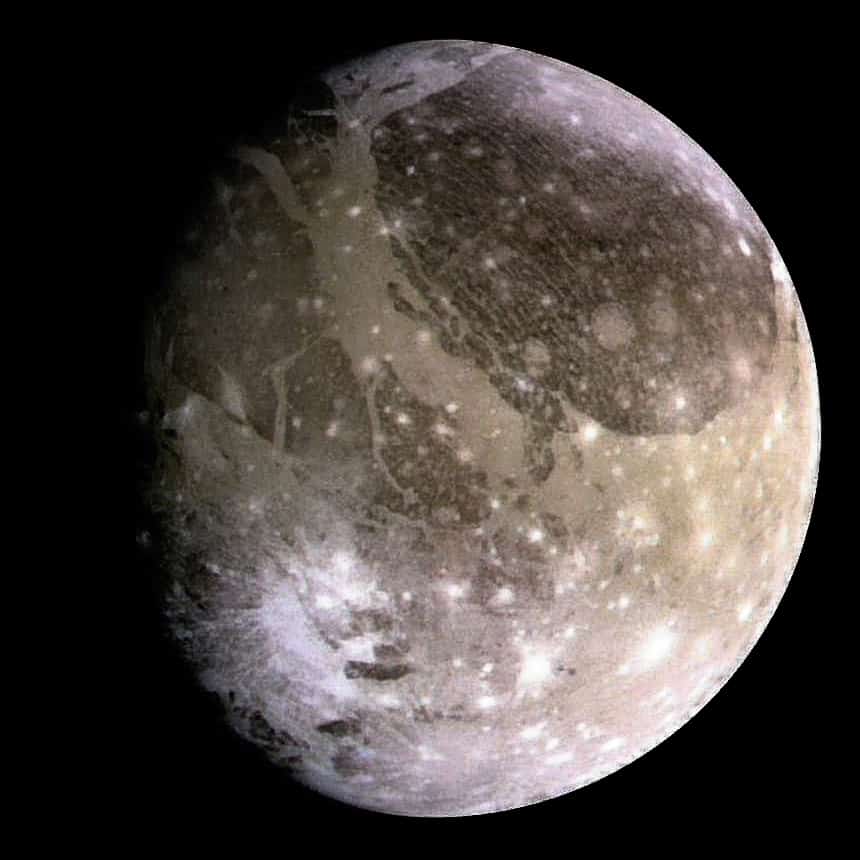
Ganymede has the lowest inertia factor of any solid body in the Solar System. Outward from Jupiter, Ganymede is the seventh moon, and it completes one trip around its parent body in 7 days.
Ganymede is made out of equal amounts of silicate rock and water ice, having an iron-rich, liquid core, and an internal ocean that may contain more water than all the water on Earth combined.
Europa
Europa is the rockstar of Jupiter’s moons. It is the smallest Galilean moon and the sixth-largest moon in the Solar System. Smaller than our Moon, Europa has a diameter of 3,100 km / 1,900 mi, and its mostly made out of silicate rock, and it has a water-ice crust and probably an iron-nickel core.
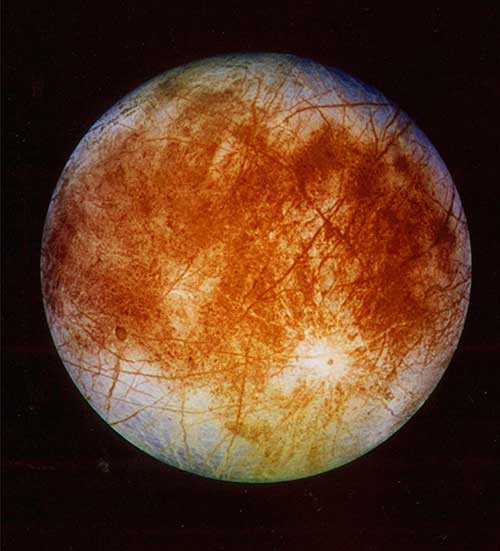
Europa’s atmosphere is primarily made out of oxygen, and it has the smoothest surface of any known solid object. This moon has the highest rate of either having or developing life since it most likely has an underground water ocean.
Callisto
Callisto is the second-largest natural satellite of Jupiter and the third-largest moon in the Solar System. Callisto has a diameter of about 4,821 km / 2,995 mi, and a third of the mass of Mercury.
It is the least affected moon of Jupiter, in regards to the gas giant’s powerful magnetosphere. It’s possible that this moon may also host an underground ocean of liquid water, but further evidence is needed.
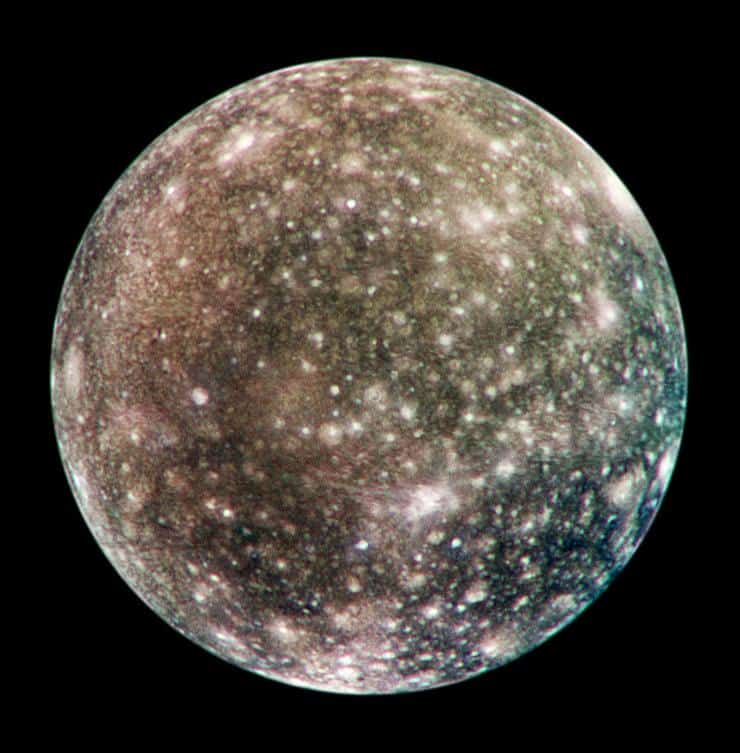
It has the lowest density of Jupiter’s moons, and its surface appears to be the oldest and most heavily cratered in the Solar System. Callisto has a thin atmosphere that is made out of molecular oxygen and carbon dioxide.
Many consider Callisto as the best option of establishing a base. This is because this moon is the least radiated out of the Galilean moon.
Other Moons of Jupiter
Though Jupiter has 79 moons, 63 of them are less than 10 km / 6.2 mi in diameter. Jupiter’s regular moons consist of the Galilean moons and an inner group of 4 small moons with diameters less than 200 km / 124 mi, and orbits with radii less than 200,000 km / 124,274 mi.
All of these moons have orbital inclinations of less than half a degree. The Galilean moons are believed to have formed together with Jupiter since they have nearly circular orbits near the plane of Jupiter’s equator.
The other moons of Jupiter are irregular moons. They are small and have elliptical and inclined orbits around their parent planet. Most of them are believed to be captured asteroids, and their exact number is impossible to establish.

Some of these asteroids may have crashed upon each other and resulted in smaller “moons.” The irregular moons of Jupiter are all believed to share a common origin; it is possible that they may have come from a bigger moon of Jupiter that was somehow destroyed. They may be the remains of a dwarf planet. Given Jupiter’s powerful gravity, it would easily capture dwarf planets as well. All the Galilean moons are, after all, bigger than the dwarf planets.
Many missions are programmed for Jupiter in the near future, and most of them will target its moons. It is possible we might learn more about the Jovian system, and we might even uncover other hidden moons in the system.
Did you Know?
- The largest moon in the Solar System, namely Ganymede, has a diameter of around 1.51 times that of our Moons.
- Jupiter has some of the brightest auroras in the Solar System; however, they can only be seen in the ultraviolet.
- Jupiter experiences up to 200 times more asteroid and comet impacts than Earth. It is sometimes called the vacuum cleaner because of this.
- When Jupiter first formed, it had at least twice the diameter it currently has today.
- If you weigh 100 pounds on Earth than on Jupiter, you would weigh 240 pounds. This is due to Jupiter’s powerful gravitational force.
- Jupiter is thought to be responsible for the Late Heavy Bombardment of the inner Solar System’s history.
Sources:
Image Sources:
- https://cdn.mos.cms.futurecdn.net/vKiBQqQdB5QEuPyhmBLYcg.jpg
- https://solarsystem.nasa.gov/system/feature_items/images/66_carousel_io_4.jpg
- https://upload.wikimedia.org/wikipedia/commons/f/f2/Ganymede_g1_true-edit1.jpg
- https://spaceplace.nasa.gov/review/europa/europa-full.en.jpg
- https://i.pinimg.com/originals/48/48/7e/48487e1629fda7750131cef37978aa23.jpg
- https://www.thegreatcoursesdaily.com/wp-content/uploads/2019/08/header-33.jpg
